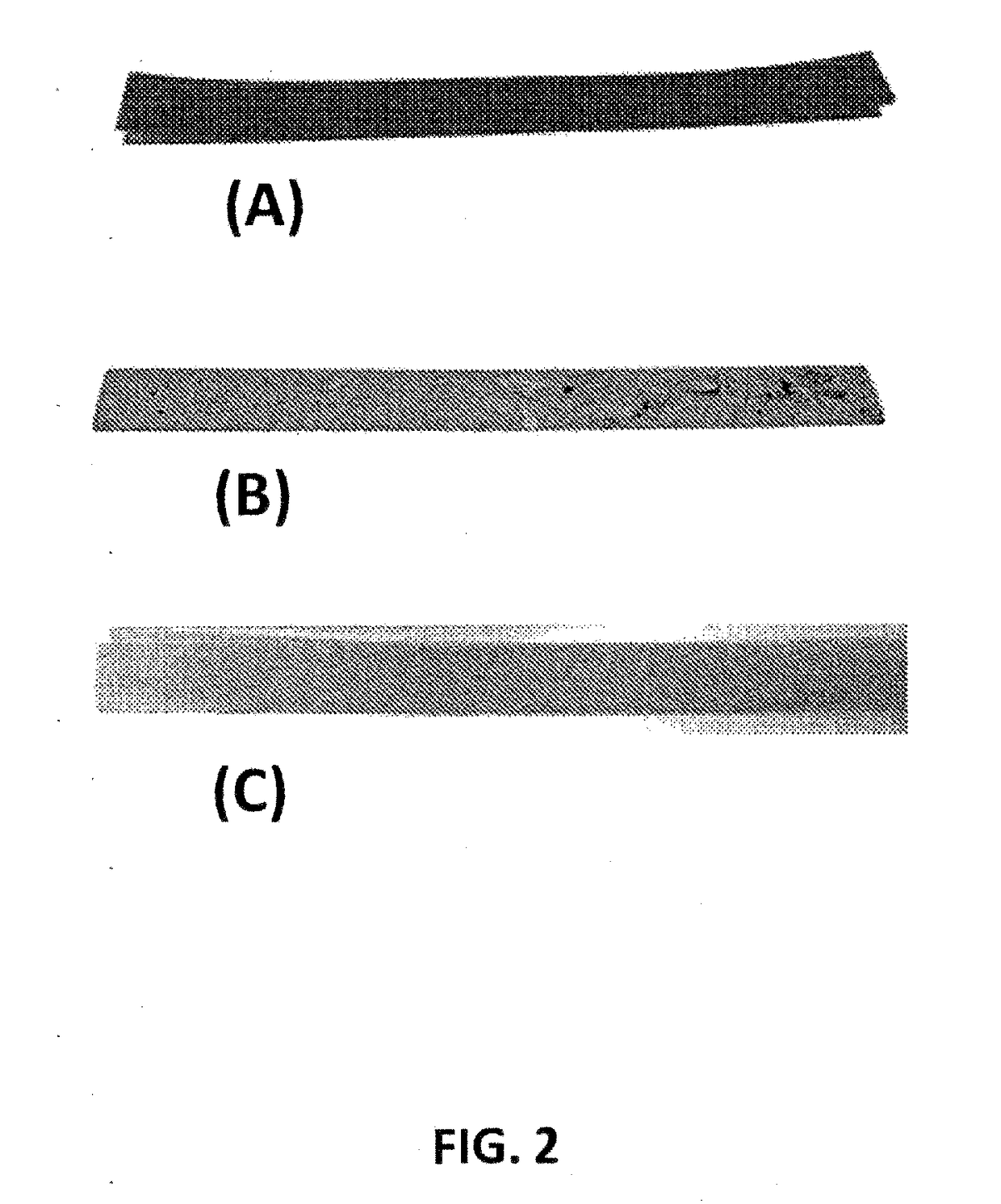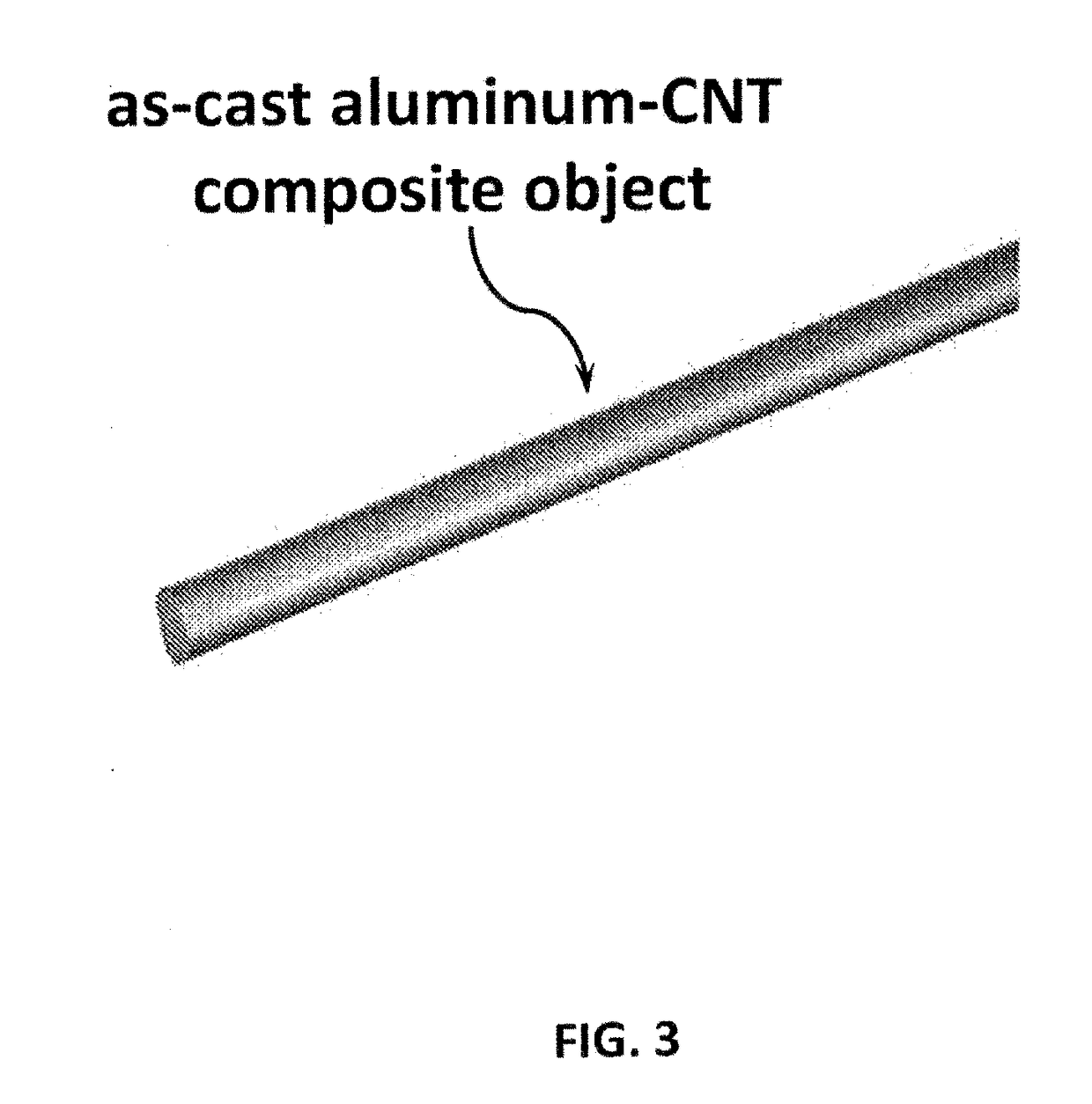3D printers and photocurable polymer and resin based feedstocks for 3D printers
a 3d printer and resin-based technology, applied in the direction of additive manufacturing processes, manufacturing tools, transportation and packaging, etc., can solve the problems of difficult or impossible to manufacture highly customized complex parts and products using traditional technologies, poorly suited to high-volume, low-cost production, etc., to facilitate the dispersion of carbon compounds
- Summary
- Abstract
- Description
- Claims
- Application Information
AI Technical Summary
Benefits of technology
Problems solved by technology
Method used
Image
Examples
example 1
[0074]As-synthesized multi-wall CNT material (comprising about 85 wt % inorganic impurities) was refluxed in excess amount of about 1M HCl for about 5 hours, and then filtered to remove the main volume of the acid while keeping the CNT material wet. The purified product (comprising about 2 wt % inorganic impurities) was washed two times with de-ionized water to remove the residual acid, and then separated into three parts for the experiments described in other Examples. The first part was dried in a convection oven at about 120° C. for about 4 hours. The second part was kept wet and refluxed in water (at CNT concentration of about 2 g / L) for about 5 hours to loosen up the CNTs. The third part was washed with copious amounts of toluene three times thereby substantially replacing the water with toluene as a solvent and bringing the CNT concentration to about 2 g / L. Then, the CNT-toluene suspension was refluxed for about 5 hours. Finally, both these CNT suspensions (one in water and on...
example 2
[0075]Dried powder of purified multi-wall CNT material prepared in Example 1 as the first part was dispersed following exactly the same process as the other two parts. To produce a stable CNT suspension, the dry powder was first refluxed in water at CNT concentration of about 2 g / L for about 5 hours, then passed 2 times through the Microfluidizer. The G / D ratio for the multi-wall CNT dry powder material as measured with about 532 nm laser excitation may vary in the range of 1.1 to 1.4. After dispersing, the G / D ratio decreased to a level varying in the range of 0.4 to 0.8 indicating increased concentration of CNT defects.
[0076]The multi-wall CNT material may be provided, for example, by Thomas Swan & Co Ltd (UK), Nanocyl (Belgium), or many other suppliers. The step of Microfluidizer treatment may be combined or substituted with any high shear mixing, sonication, wet ball milling, another similar treatment, or a combination thereof. Similar simple and efficient process may be designe...
example 3
[0078]A typical procedure to produce electrically conducting 3D-printable photopolymer resin for use in SLA technology is described in this example.
[0079]The toluene suspension of non-agglomerated and / or non-damaged CNT prepared according to the process described in Example 1 may be added to a liquid acrylic resin in a desired proportion and agitated for about 5 hours at about 50° C. with a magnetic stirrer to ensure uniform distribution of CNT throughout the resin's volume. The liquid acrylic resin may be, in particular, MakerJuice SF resin, and the CNT suspension may be added at about 20 wt %. The CNT content in the resin should be high enough to ensure desired electrical conductivity, but also low enough to keep the viscosity below about 1,000 (millipascalsecond) at about 25° C. otherwise the resin will be difficult to 3D print. Other commercially available resins, different proportions of the CNT suspension, and different solvents may also be used. For example, aromatic solvents...
PUM
| Property | Measurement | Unit |
|---|---|---|
| wavelength | aaaaa | aaaaa |
| temperature | aaaaa | aaaaa |
| temperature | aaaaa | aaaaa |
Abstract
Description
Claims
Application Information
 Login to View More
Login to View More - R&D
- Intellectual Property
- Life Sciences
- Materials
- Tech Scout
- Unparalleled Data Quality
- Higher Quality Content
- 60% Fewer Hallucinations
Browse by: Latest US Patents, China's latest patents, Technical Efficacy Thesaurus, Application Domain, Technology Topic, Popular Technical Reports.
© 2025 PatSnap. All rights reserved.Legal|Privacy policy|Modern Slavery Act Transparency Statement|Sitemap|About US| Contact US: help@patsnap.com



